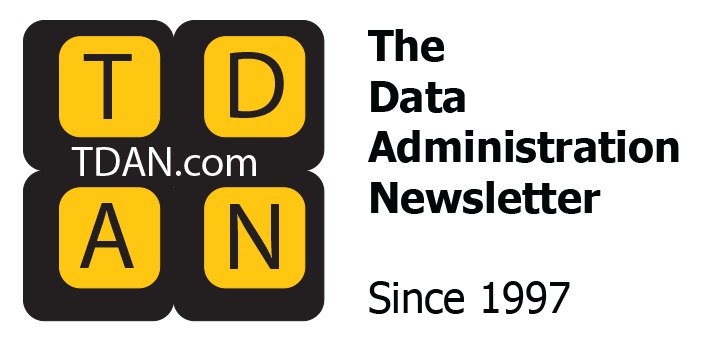
Let’s face it — data governance has never been just about ownership and stewardship. As Jonathan Reichental notes in “Data Governance for Dummies,” it touches everything from metadata and architecture to integration, privacy, and BI. At its core, much of this investment — especially in metadata, master data, and data quality — is ultimately about enabling self-service business intelligence. Why? Because today’s organizations must move faster, pushing decisions closer to where the action is. For data governance professionals, self-service BI isn’t a side effect; it’s a strategic outcome that empowers collaboration, accelerates insights, and supports consistent, governed analytics at scale.
Research
In Dresner’s 2025 research on self-service BI, 60% of respondents consider it critical or very important to their organization. Unsurprisingly, its perceived value grew with organization size. In smaller companies, users typically know who to ask for help with analytical tasks. But in large enterprises — where scale, complexity, and user diversity are the norm — self-service becomes essential for standardizing access, empowering business users, and scaling data-driven decision-making.
Encouragingly, adoption is delivering results. In 2025, 32% of organizations report to be very successful with self-service BI, while 41% say they are moderately successful. Only 6% report failure. The most striking finding: Among very large organizations having 10,000+ employees, nearly 88% say they are either very or moderately successful. For these enterprises, self-service BI isn’t just a convenience, it’s a competitive necessity.
Collaboration: A Critical Self-Service BI Dimension
Collaboration is a critical dimension of self-service BI — it’s not just about accessing data, but about working together to develop insights, validate findings, and drive informed decisions. As the nature of work evolves, so too do the methods of collaboration. COVID-19, generational shifts, and workforce turnover have all reshaped how people communicate and share analytics.
The core collaboration channels — virtual meetings, email, face-to-face discussions, and formal presentations — remain consistently preferred across most organizations. Interestingly, executive respondents favor more traditional modes like in-person meetings and phone calls, showing less appetite for newer or asynchronous tools. Regardless of the channel, the ability to collaborate effectively remains central to the success of self-service BI, enabling distributed teams to turn data into collective action.
Collaboration: Must Be Governed
In an era of information democracy — where data is both governed and freely shared — collaborative BI has become indispensable. In 2025, 89% of respondents rate it as important, very important, or critical. The ability to co-create insights, validate findings, and share decisions across teams drives business agility. Over the past five years, a consistent set of collaboration channels — virtual meetings, email, face-to-face interactions, and formal presentations — has dominated, reflecting the enduring need for both real-time dialogue and structured communication in making data-driven decisions.
New Areas of Self-Service
In 2025, organizations are placing renewed emphasis on strengthening both the capabilities and governance of business intelligence. The drive to support self-service BI through governance is expected — and necessary. As Cindi Howson, Chief Data & AI Strategy Officer at ThoughtSpot, notes,
“From the EU AI Act to a proposed federal moratorium on state AI oversight, as we continue to face an uneven global regulatory landscape, it’s paramount businesses navigate this patchwork by establishing responsible AI committees and strong internal governance. This robust governance builds trust and transparency, enabling both builders and non-technical users to confidently explore data and engage in deep self-service analytics. It’s the foundation that makes self-service reliable. At the same time, organizations must balance governance with risk and the need for agility. Overly restrictive governance has become code for no.”
Her comments highlight a key tension: Effective governance must enable — not hinder — insight and innovation.
Other areas attracting outsized investment include annotating data and analytical content, authoring and sharing content with commentary, creating data and analytic artifacts, documenting decisions in analytical threads, enabling real-time user interaction with content, and ranking artifacts based on utilization and popularity. These capabilities reflect a growing demand for richer, more collaborative, and contextualized insight generation. Critically, respondents overwhelmingly agree on the need to govern BI content creation across all organizational roles and functions. An impressive 75% of executive management respondents rate governance of BI content creation as a critically strong signal of top-level sponsorship and accountability. Weighted-mean scores reveal that executive management, IT, finance, R&D, and BI/analytics centers place the greatest emphasis on governance, with no function considering it unimportant.
As content creation scales, so does the need for control. Role and policy-based access control tops the list of must-have features, viewed as critical or very important by 63% of respondents and at least important by 92%. Following closely are capabilities like defining levels of access to shared documents and integrating with identity management systems, all rated as at least important by 77% or more. These priorities show a clear mandate: Democratize data, but do it securely and systematically.
Guided analytics also plays an increasingly central role. At least 69% of respondents consider it important, with standout features such as user interaction with visual/analytical objects, anomaly detection, search/navigation with recommendations, and automated object highlighting seen as critical or very important by 40% or more. The overall trend signals user appetite for intelligent, supportive tools that enhance the analytics experience. User adoption has been fueled by a rapid maturing of enabling technologies. Massive industry investment in natural language processing and neural networks has produced a flood of accessible and economical large language models. Trained on expansive text corpora, these models are now being widely applied to boost productivity, support coding tasks, and automate analytic processes — bringing once-experimental features into everyday BI workflows.
Parting Remarks
Self-service BI has emerged as a goal and proof point of effective data governance. As organizations scale and speed becomes essential, enabling governed, collaborative analytics across roles and departments is no longer optional — it’s mission-critical. The 2025 data shows clear momentum: widespread adoption, strong executive sponsorship, growing investment in collaborative and guided analytics, and a deepening reliance on AI-driven tooling. To realize the full value of self-service BI, organizations should continue building the foundations — data quality, metadata, and governance — this makes speed and trust possible. When done right, self-service isn’t chaos — it’s confidence at scale.
